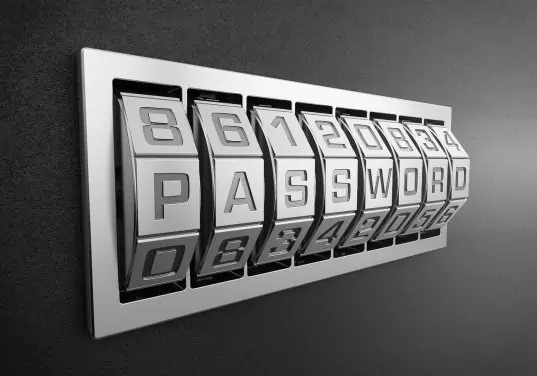Every New Year, you can contribute to your RRSP during the first 60 days and claim it as a deduction in your income tax return for the previous year.
For example, in 2024, you can make RRSP contributions (up until February 29, 2024) using your contribution room from 2023 or previous years and claim it as a deduction in your income tax return for the 2023 tax year.
This is why the first two months of every new year are called the “RRSP Season.”
People try to catch up with RRSP contributions they have neglected over the last year because they do not want to miss out on the juicy tax refunds that will come in the mail after filing their tax returns.
And, of course, they also remember that they need to save for retirement!
For a bit of background, RRSP is an acronym for Registered Retirement Savings Plan. You can contribute up to 18% of your earned income annually, up to a maximum limit of $30,780 for the 2023 tax year ($31,560 for 2024).
RRSP contributions can be claimed as a deduction in your income tax return and will result in a tax refund. The amount of refund you receive is based on your marginal tax rate.
Money invested in the RRSP grows tax-deferred until withdrawal in retirement, and any leftover RRSP contribution room can be carried forward to future years.
As if there are not enough reasons to make you want to save for retirement, there is an additional incentive (if you have kids) for why you should consider making that RRSP contribution before March 1st!
Enter the CCB!
Canada Child Benefit (CCB)
The Canada Child Benefit is a tax-free monthly benefit to help parents raise kids under 18.
Eligibility for CCB payments is based on a family’s combined net income.
For the July 2023 to June 2024 payment period (based on the 2022 return), the maximum eligible annual benefits under the CCB are $7,437 per eligible child under age 6 and $6,275 per eligible child between 6 and 17 years.
Families with children with disabilities may receive an additional benefit of $3,173 per child ($264.41 per month) for the disability tax credit.
The maximum benefit is received by a family with an annual net income that is less than $34,863. For net annual incomes between $34,863 and $75,537 and those above $75,537, there will be a clawback of the CCB based on the number of children as follows:
| Number of children | Under $34,863 | $34,863 to $75,537 | Over $75,537** |
| 1 | 0% clawback | 7.0% | $2,847 + 3.2% of excess income |
| 2 | 0% | 13.5% | $5,491 + 5.7% of excess income |
| 3 | 0% | 19.0% | $7,728 + 8.0% of excess income |
| 4+ | 0% | 23.0% | $9,355 + 9.5% of excess income |
** Percentage of clawback on net income over $75,537.
For example, a family with two children under 6 and a family net income of $30,500 would qualify for the maximum annual benefit of $14,874 ($7,437 x 2).
If the same family had a net income of $69,395, there would be a clawback of 13.5% on the excess income over $34,532, i.e. ($69,395 – $34,863) x 13.5% = $4,661.82. Therefore, the family would receive a total CCB benefit of $10,212.18 (i.e. $14,874 – $4,661.82).
RRSP Contributions Are Considered A Deduction
RRSP contributions are treated in a way that highlights the difference between tax credits and tax deductions. While tax credits are calculated at the lowest tax rate (currently 15%), deductions will impact your income at your highest marginal tax rate.
Additionally, because tax deductions lower your net income on line 236 of your tax return, they impact your eligibility for income-tested benefits at both federal and provincial levels.
The main deductions that lower your net income on line 236 include the following:
- RRSP contributions
- Pension adjustments
- Childcare expenses
- Professional and Union dues
- Employment expenses
Are you seeing where I’m going with this?
Because RRSP contributions are considered a tax deduction on your income tax return, they lower your taxable income and can increase the amount of CCB payments you are eligible for!

Canada Child Benefit and RRSP Contribution Scenarios
For the scenarios below, I used the government CCB calculator (2021 numbers). See how RRSP contributions increase the Canada Child Benefits you qualify for.
Scenario 1
Family A with 3 kids all under 6 years of age and a family net income of $75,000. They make no RRSP contributions and can expect a total family CCB payment of $12,413 for the year. They can also expect to pay approximately $15,852 in taxes (Ontario).
Assumptions for scenario 1: no RRSP contribution made and no other pension plan contributions.
Scenario 2
Family B with 3 kids under 6 years of age and a family net income of $75,000. If they decide to contribute $13,500 which is their full RRSP contribution room for the year (i.e. 18% x $75,000), their family net income falls to $61,500. They can expect a family CCB payment of $14,145 and will pay approx. $11,814 in taxes (Ontario).
Assumptions for scenario 2: full RRSP contribution made and no other pension plan contributions.
Outcome
Because Family B made RRSP contributions for the previous year, their CCB payments increased by $1,732 for the year or $144/month. Additionally, they will “save” $4,038 in taxes and at a marginal tax rate of 29.65%, their RRSP contribution will also result in a tax refund of about $4,000.
The scenarios denoted above are somewhat simplistic. However, they clearly show that when it comes to income-tested benefits (such as CCB, GST/HST credit, etc.), there is extra money to be had if your taxable net income is as low as possible.
Closing Thoughts
In previous articles, I discussed the basics of the RRSP and how to save on taxes by maximizing your RRSP contributions.
Saving for retirement is always a good thing. With RRSP contributions, you lower your taxes, get a refund, and grow your retirement pot. The new Canada Child Benefit program is especially beneficial to low- and middle-income families.
When you boost your RRSP contributions and increase the CCB you are eligible for, the extra funds received can also be used to build up a family RESP for your children’s future post-secondary education.
One last thing!
It is important to determine what works best for your family when it comes to making RRSP contributions efficiently.
For some individuals just starting out in the workforce and currently in a low tax bracket, it may make more sense to carry forward their RRSP contributions until they are in a higher tax bracket.
For others in a higher tax bracket, contributing to a spousal RRSP as a means of income-splitting in retirement may be the savvy thing to do.
Related Posts:




Good piece….I have learnt a lot from this.
Thank you
@Adeola: You are welcome!
This piece is the stuff of legend. It has personally impacted me in more ways than you can imagine.
Thank you
@Ayomide: I am glad to be of help. Cheers!
Thanks for this article Enoch. It was really knowledgeable.
Actually my CCB payments went down this year by more than 100 dollars.
Would you know if there are any major changes that happened this year?
Also, is there any clawback limit after $65,976. I am guessing did I cross another level and that may be the reason my CCB payments down.
Thanks.
Mine did too. Basically due to an increase in income.
Thanks for this article. I was wondering if I can extend your logic further, where RRSP contributions can be used to manipulate the net income of spouses and who would be considered the lower income spouse.
I noticed after completing my taxes on a popular tax program that our joint return would be 5k. I noticed that after my large RRSP contribution my net income was only $200 more than my spouse, so I decided to carry forward $250 of her contribution, thus making me the lower net income earner by $50. The return jumped to a joint 10K.
Am I correct in assuming that the net income can be manipulated in this fashion?
@B: You could potentially “save” on taxes now by contributing to a spousal RRSP of a lower-income spouse. The higher-earning spouse gets the tax deduction at their higher marginal tax rate, and the lower-earning spouse pays taxes on the amount when they start withdrawing in retirement…hopefully at a much lower tax rate. Note that you must have RRSP contribution before you can contribute to a spouse’s RRSP.
Hello Enoch, this is very helpful!
Why do you say “Additionally, they will save $1,401 in taxes” in Outcome section?
@Shawn: When I updated this post with 2020 numbers, it appears that I did not adjust the tax difference between the scenarios. It should be accurate now.
I know this is an older article, but I have a kind of related question. Does the gross up and then credit received for Canadian eligible dividends outside of a registered account affect the CCB enough that it would be advisable for people who get the CCB to avoid holding these investments in a regular taxable account?
I answered my own question using an online tax calculator and the CCB calculator on the CRA website. No, the people in income brackets that get the CCB should not avoid CDN Eligible dividends to avoid the gross up.
The credit at these income levels exceeds any loss from the CCB due to the gross up amount if you made an equivalent amount as interest income instead.
I used a base income and then compared that to including 2k of CDN Eligible Dividends vs 2K of interest income in my test runs. The CDN Eligible dividends were ahead in any income level I compared when looking at final income after the CCB and taxes were taken in to account.
Is rrsp money include in your income when you are applying for day care subsidies?
@Aqsa: RRSP funds are not considered as income until you start withdrawing from your RRSP account.
Even if your gross income is above the limit, can you decrease it enough with RRSP contributions, to trigger the Working Income Benefit, or whatever it’s called now?
@L: Yes, if you qualify based on your adjusted net income after RRSP contributions. As per the government’s website, “Adjusted family net income – your family net income minus any universal child care benefit (UCCB) and registered disability savings plan (RDSP) income received plus any UCCB and RDSP amounts repaid.”